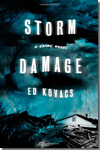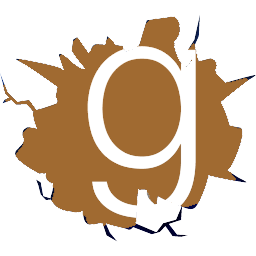Many years ago in Seoul, South Korea, a manager at the media company where I’d been working as a consultant gave me a key chain charm “for good luck in making money.” I’ve often worn it on my key ring since then, although I don’t believe it has any powers to bring me wealth. No anomalous financial reward came to me since I’ve carried it. I wasn’t given any indication that the charm was anything other than a gift shop purchase, nor was I told the item had been blessed by any Korean priest, monk, shaman, or adept. Still, I won’t be removing the charm from my keys anytime soon, and therein lies the springboard for a discussion.
Charms, amulets and talismans have been worn and carried since time immemorial, to lend us help and comfort along the difficult road of life. Even in our highly developed, technologically advanced cultures they remain popular—my local UPS shipper has a large display of charms for sale on their counter—although their original purposes are often lost. A rabbit’s foot is considered lucky to us in America, thanks to African slaves who were brought to this country. In Africa, carrying the foot of a fast animal was believed to help one quickly flee dangerous situations. A lucky trait to have, indeed.
Generally speaking, a talisman imparts some kind of power to the bearer, an amulet affords some sort of protection, and a charm may do either. These terms, however, are often used interchangeably. The objects can be carried or designed for general or specific purposes. A round Tibetan Dzi bead worn on a necklace and used to ward off “the evil eye” serves a much more specific purpose than a four-leaf clover kept in your purse.
A lot of people wear charms and don’t even realize it. Not long ago it was common to give teenage girls charm bracelets; to the girls it was just jewelry, with no thought to any history behind the icons dangling on the bracelet. These are simple charms or talismans that are bought in a store and don’t involve any kind of preparation or rites.
Primitive cultures spawned simple talismans. As societies evolved and matured, talismans became more artful and complex. Some modern day occultists equate sophisticated, energetically-imbued talismans with computers, claiming the icons can be programmed to aid in healing work, spiritual mediumship, and other activities. Talismans or amulets that have been imbued with “power” through purification, blessing and consecration comprise an entirely different category. These objects have been created with careful intent and under certain exacting conditions, perhaps taking years to complete. They are primarily utilized by more advanced spiritual practitioners.
The concept is not far removed from, for example, a fervent Catholic with a rosary blessed by the Pope or a Tibetan with a mala touched by the Dali Lama. Anyone who embraces the notion that sacred religious inanimate objects have power—and many people do—must then be open to the efficacy of certain charms or talismans that have been specially created. The most valuable artifact at the Cathedral of Our Lady of the Angels, the flagship of the Catholic archdiocese in downtown Los Angeles is a piece of the tilma, the cloth robe, of a Mexican saint on display behind thick protective Plexiglas. Ardent believers kneel, pray, cry and hold their hands on the Plexiglas, sometimes for long periods of time, hoping to receive a divine blessing from the material, assuming it to possess the powers of its previous owner.
All this takes us to our old friend, “belief.” For charms to work, most suggest belief is all-important. And superstitious belief is a concept that must be reckoned with. We’ve all heard about baseball players who attributed a hot hitting streak to a “lucky bat.” Some basketball stars eat the same meal before every game because they think it will help them win. The archeologist/adventurer hero of my novel UNSEEN FORCES wears a gold pendant of Hathor, an Egyptian Goddess. He believes it affords him a measure of protection and will rub it and say a prayer when in a dicey situation.
Superstition, unfortunately, does not readily lend itself to laboratory verification. Much of it is, perhaps to the deep discomfort of the religiously devout, heavily rooted in pagan magical practices. The difference between carrying a rabbit’s foot for luck and carrying a carefully crafted symbol of good fortune is perhaps the difference between mere superstition and a conscious attempt to manipulate an outcome.
Believing in the power of an object to aid us is all well and good, but I wonder if it represents one of the failings of human nature. Are we giving our power away by placing responsibility for our fortune, good or bad, with something external, something outside ourselves?
Abdicating responsibility for our lives and our actions seems to have become a national pastime. Perhaps it would be better to forego charms and talismans altogether and simply spend more time improving and working on ourselves. Aren’t talismans only tools, like training wheels or crutches, and not solutions to life’s challenges?
We all have a psychological need for protection and reassurance, but when walking down that dark alley, is fingering your St. Christopher’s medallion or Star of David or ankh going to be the thing that gets you to the other end? Southeast Asian fighters have for centuries tattooed themselves with magical and/or religious designs and Buddhist scriptures in the belief it would protect them in battle. In effect, they turn their entire body into a talisman. Were many killed in battle anyway? Of course.
Some would argue that talismans act as tools to help us do exactly what we are destined to do: evolve. By creating our own personal talisman as an embodiment of a high ideal, a blueprint of the kind of person we would like to be, perhaps we are spending our time well. Maybe talismans are focal points that remind us of powers we have, or have access to, that we’ve long forgotten.
How about this as a bottom line question? Can intention be directed and impressed into inanimate objects for a specific, later use? Which is another way of asking if icons or amulets can really work, independent of belief.
Since our thoughts are energy and can be measured with a wave signature, it’s intriguing to consider whether certain crystals are theoretically capable of amplifying our thoughts, since crystals are used in electronics to amplify frequencies. Perhaps science still has much to learn from the lost, quasi-art of advanced talisman manufacture and usage.












To assume that inanimate objects can possess some supernatural power, is to assume that the supernatural actually exist. I believe that all of Gods laws are natural, and that one day science will explain each and every one of them, when God allows it. If you come out of a dark room into the bright sunlight you will be overwhelmed by the brightness, in the same way God reveals to mankind a little more of how the universe works according to our stage of evolution as the human race. I agree that we must all evolve both moraly and intellectualy, but that it must be a result of our own spirituality so that we can benefit from the experience. By the same token the spiritual forces that can supposedly be controlled via some object that has been inscribed or has had some ritual performed over it, would presume that all spirits are on the same page and believe that same thing and are somehow consribed to perform a given duty (help somebody win the lotto, protect someone from all misfortune etc). It would seem that God being all powerful, all knowing, merciful and compassionate would not give an unfair advantage to some of his children and thereby prevent them from learning life lessons. This of course is just my conviction and I can no more prove it than you can disprove it.